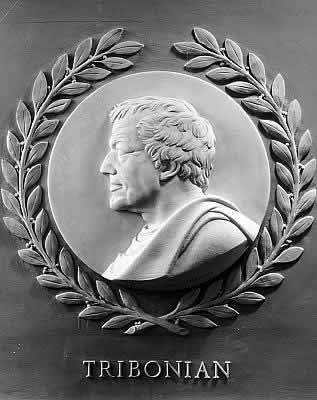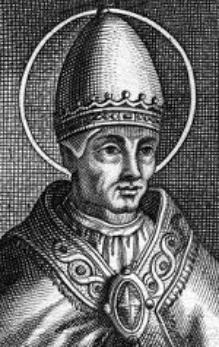
Pope Felix I was the bishop of Rome from 5 January 269 to his death on 30 December 274. Born in Rome, he succeeded Pope Dionysius and is noted for his theological contributions, particularly a significant dogmatic letter addressing the unity of Christ’s person. During his papacy, Felix I confronted the heresy of Paul of Samosata, who denied the divinity of Christ. The intervention of Emperor Aurelian, prompted by Felix, led to Paul’s deposition from the bishopric of Antioch, reinforcing orthodox Christological doctrine.
The 530s decade ran from January 1, 530, to December 31, 539.
The 520s decade ran from January 1, 520, to December 31, 529.
The 490s decade ran from January 1, 490, to December 31, 499.
The 480s decade ran from January 1, 480, to December 31, 489.

Year 452 (CDLII) was a leap year starting on Tuesday of the Julian calendar. At the time, it was known as the Year of the Consulship of Herculanus and Sporacius. The denomination 452 for this year has been used since the early medieval period, when the Anno Domini calendar era became the prevalent method in Europe for naming years.

Year 440 (CDXL) was a leap year starting on Monday of the Julian calendar. At the time, it was known as the Year of the Consulship of Valentinianus and Anatolius. The denomination 440 for this year has been used since the early medieval period, when the Anno Domini calendar era became the prevalent method in Europe for naming years.
The 460s decade ran from January 1, 460, to December 31, 469.

Year 496 (CDXCVI) was a leap year starting on Monday of the Julian calendar. In the Roman Empire, it was known as the Year of the Consulship of Paulus without colleague. The denomination 496 for this year has been used since the early medieval period, when the Anno Domini calendar era became the prevalent method in Europe for naming years.

Year 526 (DXXVI) was a common year starting on Thursday of the Julian calendar. At the time, it was known as the Year of the Consulship of Olybrius without colleague. The denomination 526 for this year has been used since the early medieval period, when the Anno Domini calendar era became the prevalent method in Europe for naming years.

Year 532 (DXXXII) was a leap year starting on Thursday of the Julian calendar. At the time, it was known as the Second year after the Consulship of Lampadius and Probus. The denomination 532 for this year has been used since the early medieval period, when the Anno Domini calendar era became the prevalent method in Europe for naming years.

Year 537 (DXXXVII) was a common year starting on Thursday of the Julian calendar. At the time, it was known as the Second year after the Consulship of Belisarius. The denomination 537 for this year has been used since the early medieval period, when the Anno Domini calendar era became the prevalent method in Europe for naming years.
Year 487 (CDLXXXVII) was a common year starting on Thursday of the Julian calendar. At the time, it was known as the Year of the Consulship of Boethius without colleague. The denomination 487 for this year has been used since the early medieval period, when the Anno Domini calendar era became the prevalent method in Europe for naming years.

Year 498 (CDXCVIII) was a common year starting on Thursday of the Julian calendar. At the time, it was known as the Year of the Consulship of Paulinus and Scytha. The denomination 498 for this year has been used since the early medieval period, when the Anno Domini calendar era became the prevalent method in Europe for naming years.

Year 530 (DXXX) was a common year starting on Tuesday of the Julian calendar. In the Roman Empire, it was known as the Year of the Consulship of Lampadius and Probus. The denomination 530 for this year has been used since the early medieval period, when the Anno Domini calendar era became the prevalent method in Europe for naming years.

Year 535 (DXXXV) was a common year starting on Monday of the Julian calendar. At the time, it was known as the Year of the Consulship of Belisarius without colleague. The denomination 535 for this year has been used since the early medieval period, when the Anno Domini calendar era became the prevalent method in Europe for naming years.

Year 274 (CCLXXIV) was a common year starting on Thursday of the Julian calendar. At the time, it was known as the Year of the Consulship of Aurelianus and Capitolinus. The denomination 274 for this year has been used since the early medieval period, when the Anno Domini calendar era became the prevalent method in Europe for naming years.

Pope Simplicius was the bishop of Rome from 468 to his death. He combated the Eutychian heresy, ended the practice of consecrating bishops only in December, and sought to offset the effects of Germanic invasions.
Acacius of Constantinople served as the Ecumenical Patriarch of Constantinople from 472 to 489. He was practically the first prelate in the East and was renowned for his ambitious participation in the Chalcedonian controversy. His controversial attempts at healing the theological divisions led to the Acacian schism and his being condemned by the Chalcedonian churches. He is revered as a saint in Oriental Orthodoxy.

The Ostrogothic Papacy was a period from 493 to 537 where the papacy was strongly influenced by the Ostrogothic Kingdom, if the pope was not outright appointed by the Ostrogothic King. The selection and administration of popes during this period was strongly influenced by Theodoric the Great and his successors Athalaric and Theodahad. This period terminated with Justinian I's (re)conquest of Rome during the Gothic War (535–554), inaugurating the Byzantine Papacy (537–752).












